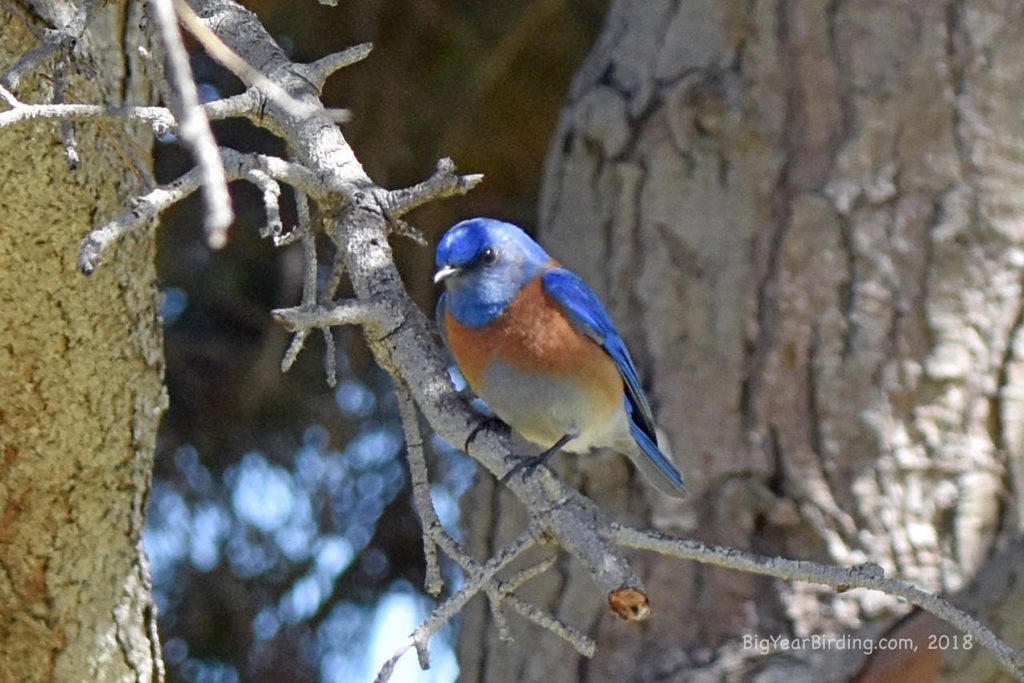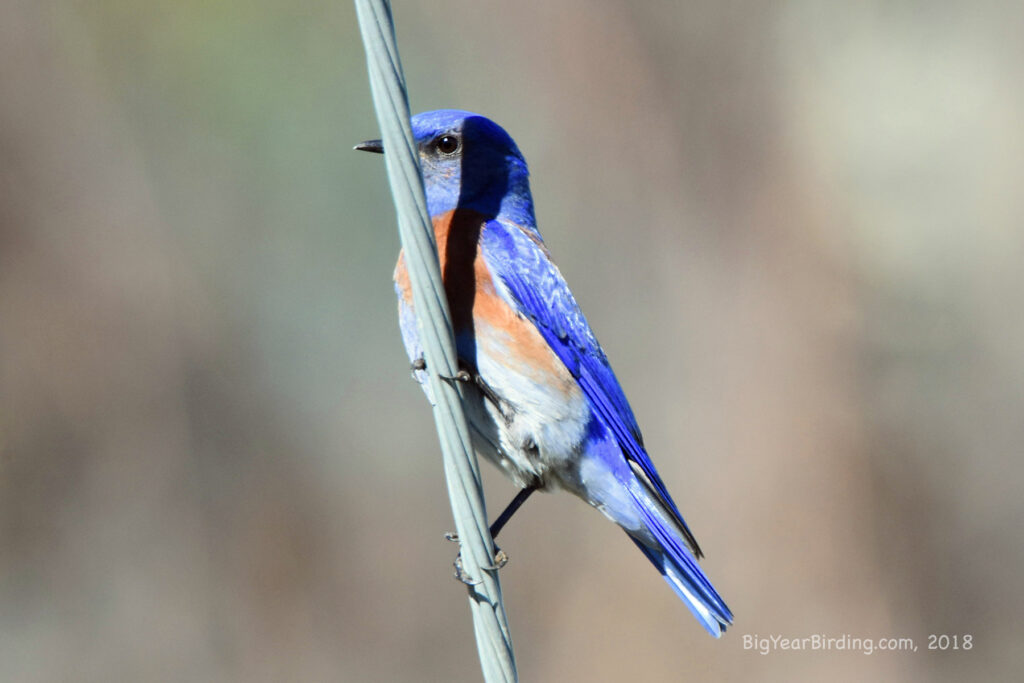
The Western Bluebird (Sialia mexicana) is a small, colorful passerine bird that inhabits western North America, from southern British Columbia to central Mexico. The average length of an adult Western Bluebird is about 6-7 inches, with a wingspan of 10-12 inches. The average weight of a Western Bluebird is around 0.9-1.1 ounces, making them one of the smaller bird species in their range.

One of the most distinguishing field marks of the Western Bluebird is its vibrant blue plumage on its head, back, and wings, which contrasts sharply with its rusty-red breast and flanks. Males have a deeper blue color than females, and both sexes have a white underbelly. The Western Bluebird also has a short, thick bill that is ideal for catching insects, spiders, and other small invertebrates.
Western Bluebirds are primarily non-migratory birds, meaning that they do not travel long distances to wintering grounds. Instead, they are year-round residents in their breeding range. However, some populations may move to lower elevations during the winter months to escape colder temperatures and deep snow.
Western Bluebirds prefer open woodlands, meadows, and grasslands with scattered trees and shrubs. They are cavity nesters, and will use natural tree cavities, abandoned woodpecker holes, or nest boxes provided by humans. During breeding season, Western Bluebirds are often seen perched on branches, searching for insects or singing their soft, warbling songs.

The Western Bluebird is a cavity-nesting bird that can benefit from the installation of nest boxes in appropriate habitats. The species suffered declines in the 20th century due to habitat loss and competition with introduced species like the European Starling and House Sparrow. However, thanks to conservation efforts, populations have stabilized or increased in some areas, making the Western Bluebird a welcome sight for birders and nature enthusiasts.
